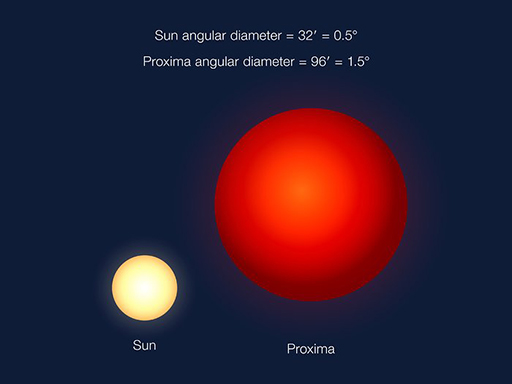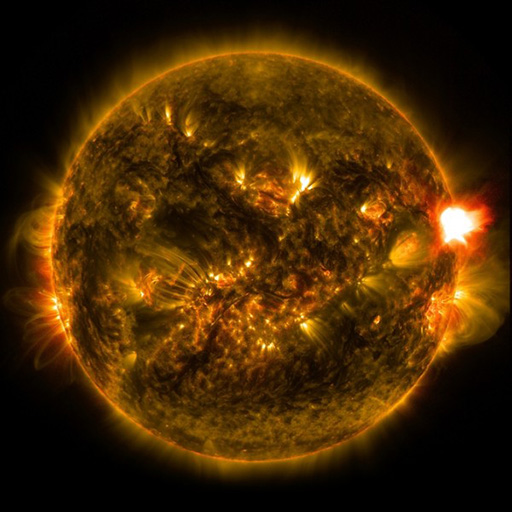2.3 Consequences of being so close to a star
Being so close to your star is not all good, even if it is a relatively cool M dwarf like Proxima Centauri. Proxima b would be a very different world from Earth despite being similar in size. As shown in Figure 4, the small, dim, red star would appear large in the planet’s sky.

As you learned in Week 6, being so close leads to tidal locking. The same part of Proxima b always points at its star. The Earth spins daily, so every part of our planet spends some time in sunlight, but there will be no cycle from day to night anywhere on Proxima b. On the dayside of Proxima b, the large disk of the dim red star will always beam down from exactly the same direction and temperatures will be high. On the nightside of Proxima b, it will be freezing and completely dark, except when Alpha Centauri A and B are in the sky (Figure 5). While Proxima b might have liquid water somewhere on its surface, perhaps in the boundary region between the two extremes, conditions there will be very different from the conditions on Earth.

You might imagine that small, dim M dwarfs like Proxima Centauri are peaceful stars, but are they really? The colours of starlight beyond violet in the electromagnetic spectrum – ultraviolet light – can be harmful to life. It is ultraviolet light that causes sunburn and overexposure can increase the chance of developing skin cancer. We are protected from the damaging radiation by our atmosphere. However, all stars release sudden explosions of energy called flares (Figure 6), which are often accompanied by jets of hot stellar material thrown out into space. Planets close to their stars might be gradually stripped of any atmosphere by such activity, leaving them exposed to this harmful kind of light.

Perhaps surprisingly, many M dwarfs including Proxima Centauri are very active stars. This is due to their internal structure being different from hotter stars like the Sun – the energy generated in their cores is transported to the surface entirely by convection currents, like water heated in a saucepan.
We might have hoped that Proxima b could retain or replenish its protective atmosphere in spite of such activity, but an observation in May 2016 and reported in 2018 seemed to dramatically reduce the possibility of Proxima b being home to life. Proxima Centauri emitted a ‘superflare’ so bright that the star became visible to the naked eye, ten times more powerful than any flares seen from Proxima Centauri before. Some bacteria on Earth can survive very high levels of radiation but if fully exposed this superflare would have been deadly even for them.
